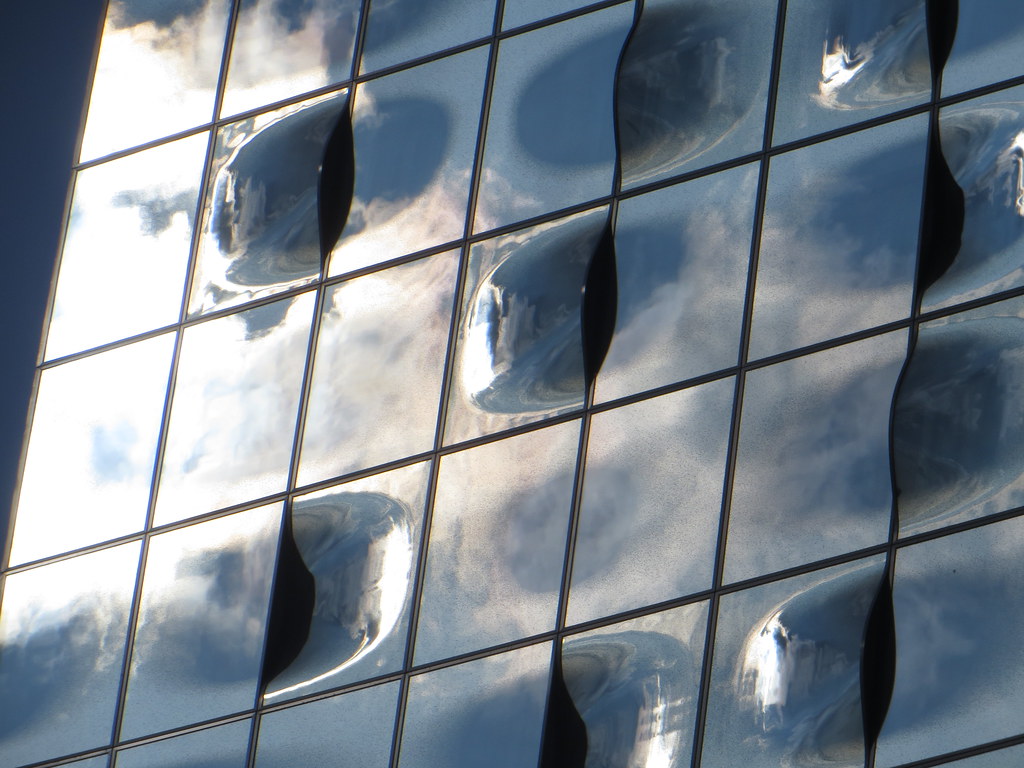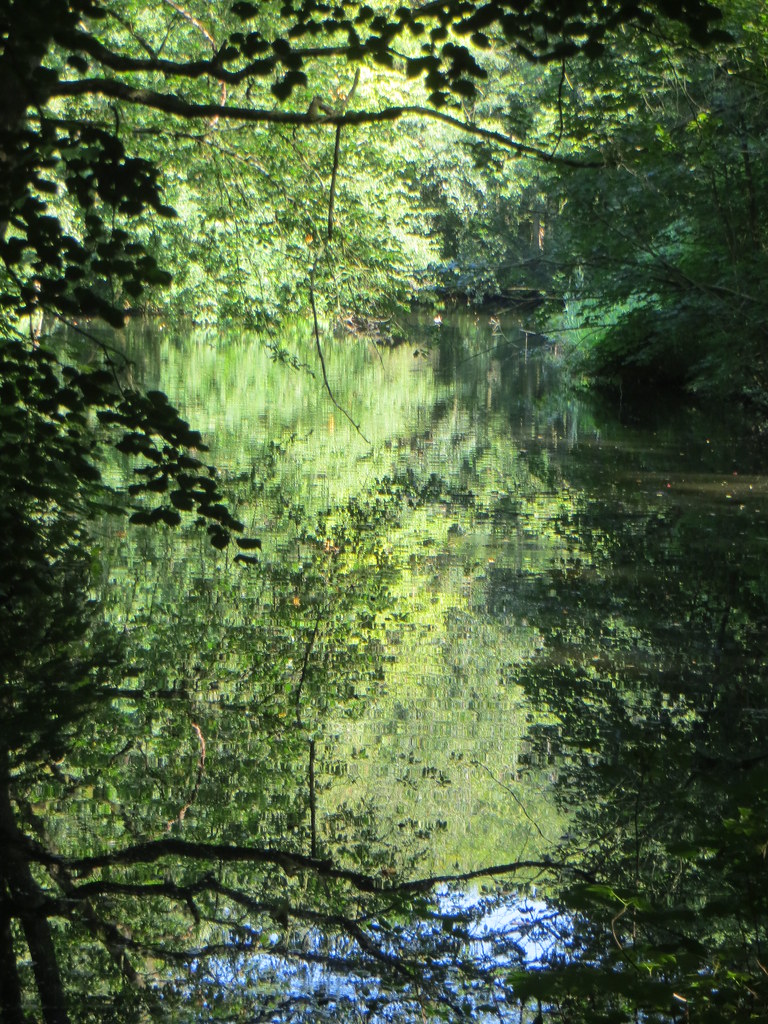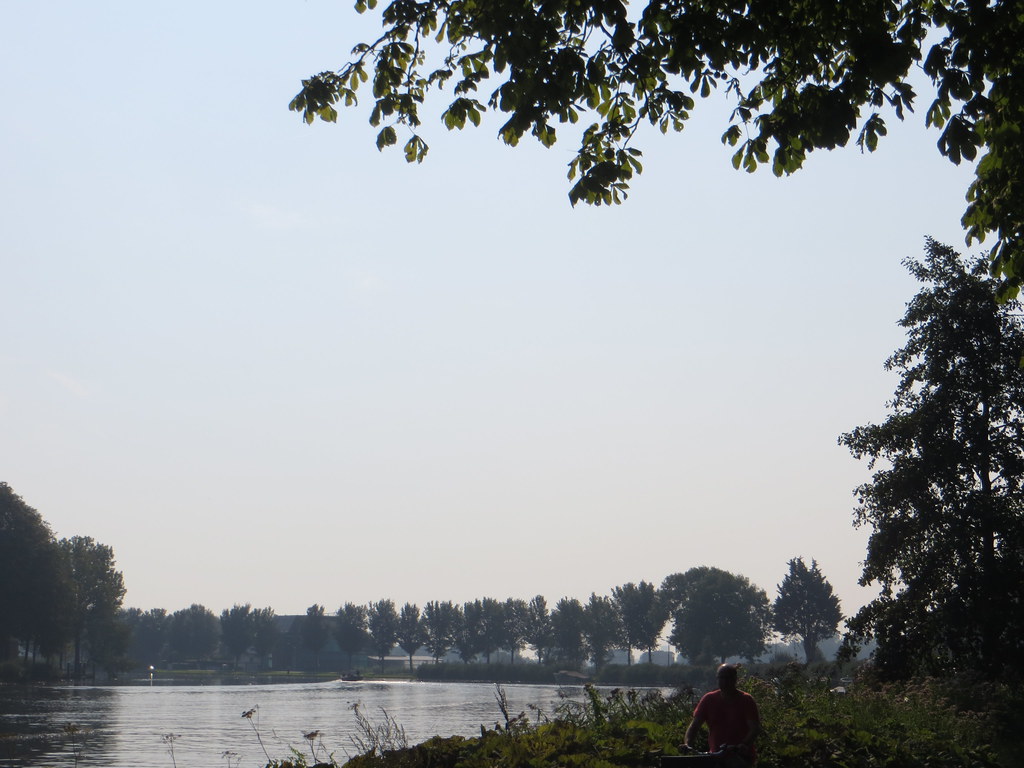There was a family party over the weekend - a special birthday for someone (not me), but if the mood was nostalgic for some of us, casting back decades and generations, the children, though showing polite interest in great-great-grandparents even I never knew, soon brought us up to date by trying to bamboozle the Google Assistant device:
"Google, who is your mother?"
"My engineers are always there for me"
As to asking who its father was, the resulting schmaltzy PR guff about Google's merits put me off trying to remember it.
Heron Island, Great Barrier Reef, Australia
Monday 30 September 2019
Monday 23 September 2019
What I did not on my holidays
Perhaps 2012 was too soon after retirement to think of taking on new work-type commitments - but subsequently, either they weren't recruiting any more people to the scheme until this year, or I didn't see the announcements in time. But this year, I duly ended up accepted, briefed and kitted out (two shirts, hat, fleece waistcoat, a very handy fleece-lined rainproof and a backpack), and needing to squeeze the minimum number of shifts into the end of July and early August. It turned out you have to be quick off the mark to book in, as the locations closest to me had already been filled by the time I got round to it.
Not that Piccadilly Circus and Parliament Square are hard to get to, nor, as it turned out, was it that demanding an exercise - my first day was the hottest day of the year, and even for that we all seemed to manage OK (slightly dispiriting, though, that so many people thought we were trying to sell them something, but that's central London in the height of the tourist season, I suppose). There were enough people on each team to cover for each other, and all the support materials were well thought out (though it seems as though there's some sort of rule that the wheels on things like their information stands or "pods", just like supermarket trolleys, must have a mind of their own as to where they will go, which added a certain excitement to pushing them up or down any sort of slope to and from their storage spots). Not that there wasn't the odd unexpected question: any camera repair shop near Parliament Square? Are there any, anywhere, nowadays? All things considered, it was actually quite invigorating, even - or especially - on the day when the weather changed and gusts of wind and rain threatened to play havoc with the maps.
This weekend there was another opportunity, to do some ushering/doorkeeping/general dogsbodying for a special event at City Hall for EU residents in London.
It turned out to attract even nore people than they expected, and I believe they even had to shut the doors early. The offer of free legal advice on the complexities of the government's post-Brexit settled status scheme (say no more) had most to do with that, no doubt.
But there were also some social and fun activities alongside, including concerts outside - and "crazy football" (something to do with the fact that London - or at least Wembley Stadium - is hosting parts, including the final, of the European Championship next year, though presumably not to these rules):
Wednesday 18 September 2019
It may be a bit late to remark on Saturday's other big event, the Last Night of the Proms, but there are some bemusing, if predictable, comments on the BBC's Facebook feed of the moments where the guest star singer of the night, Jamie Barton, not only waved her flag but nailed her colours to the mast, changing a line of "I Got Rhythm" to "I got my gal", and, at the climactic moment of "Rule Britannia", holding high a rainbow flag. As one might suspect, the Daily Mail readers lined up the complaints about it being "too political" (though that complaint was as much about the prevalence of EU flags and gold-starred blue berets among the prommers in the Arena) and "rubbing our noses in it".
Quite how any of that is more political than the waving of Union Jacks (or any other national symbols), I don't know; in any case, the apparently patriotic elements of the Last Night have carried a strong element of ironic exaggeration at least since they started to be set in stone in the 1950s, and the enthusiasm for them is simply that community singing of belting tunes on a party night is fun. Nor is it obvious how it's any more ostentatious than the time, a few years ago, when a prommer threw a pair of knickers at Jonas Kaufman, only to have a pair of Union Jack boxers lobbed back in return, or the time (even more years back) when Anna Netrebko smooched her way around the orchestra, caressing the occasional male musician as she sang Lehar's"Meine Lippen, sie küssen so heiß".
And then there was the complaint about bringing foreign performers in for the last night (culminating in "Rule Britannia", of course) - but hadn't they actually picked up from the programmes for the other 90-odd concerts that the galaxy of overseas star performers (not to mention composers) is rather the point of the whole exercise?
Be that as it may, and controversy apart, here's Jamie Barton's performance on the night of "Somewhere Over the Rainbow"
Quite how any of that is more political than the waving of Union Jacks (or any other national symbols), I don't know; in any case, the apparently patriotic elements of the Last Night have carried a strong element of ironic exaggeration at least since they started to be set in stone in the 1950s, and the enthusiasm for them is simply that community singing of belting tunes on a party night is fun. Nor is it obvious how it's any more ostentatious than the time, a few years ago, when a prommer threw a pair of knickers at Jonas Kaufman, only to have a pair of Union Jack boxers lobbed back in return, or the time (even more years back) when Anna Netrebko smooched her way around the orchestra, caressing the occasional male musician as she sang Lehar's"Meine Lippen, sie küssen so heiß".
And then there was the complaint about bringing foreign performers in for the last night (culminating in "Rule Britannia", of course) - but hadn't they actually picked up from the programmes for the other 90-odd concerts that the galaxy of overseas star performers (not to mention composers) is rather the point of the whole exercise?
Be that as it may, and controversy apart, here's Jamie Barton's performance on the night of "Somewhere Over the Rainbow"
Monday 16 September 2019

Not what one normally expects to see while out to get the weekly shop. This Royal Fleet Auxiliary was in town for one big event, but on Saturday morning was joined by a couple of patrol boats, one of which took up position as a lane marker for the Great River Race, the annual 20-odd mile procession race all the way from Greenwich to Richmond. With so many crews from outside London, a lane marker's important, to stop the inexperienced from succumbing to the temptation to cut corners on the inside of the bends: not only is it counter-productive (the current runs fastest slightly to the outside of the middle on a bend), for that reason it's also against the rule of the river, and would risk collision with oncoming traffic.
There might have been another reason for the patrol boats' presence. It's the custom for crews in this race to fly as large a banner as they feel they can (this is no race for high-tech Olympic-style craft stripped down to the minimum). There's a usually a fine display, creating no end of puzzles trying to recognise all sorts of county and local flags that we wouldn't normally see; this year I only saw one with a Skull and Crossbones, but it obviously did no harm to have the Royal Navy on hand. (Apologies in advance for the quality of the video: trying to zoom in across such an expanse of water pushed my phone camera's capabilities to the limit):
Wednesday 11 September 2019
Nature notes
Occasionally I'm woken in the night by a whimpering-wailing sort of sound that eventually dies away. I rather assumed it was a sound of animal pain and alarm, and therefore that perhaps one of our local foxes was earning its keep by catching a rat. It certainly wasn't the screaming bark of their mating call (the kind they use in TV dramas to signal that it's creepy at night in the countryside and Something Nasty is about to happen).
But one night I looked out to see a fox chasing another, and as they passed under my window it was clearly the chasing fox that was making the noise as it saw off an intruder. So it's presumably some sort of territorial warning, the vulpine equivalent of "Git orf moi land!": or - this being the East End - "Gerrahta my rubbish bin!"
But one night I looked out to see a fox chasing another, and as they passed under my window it was clearly the chasing fox that was making the noise as it saw off an intruder. So it's presumably some sort of territorial warning, the vulpine equivalent of "Git orf moi land!": or - this being the East End - "Gerrahta my rubbish bin!"
Sunday 8 September 2019
Saturday 7 September 2019
What I did on my holidays (VI) - Hamburg
The offer of a home exchange to Amsterdam provided an opportunity to try something I've had in mind for a while - to go back to Hamburg, but to do so by train. It's possible to do it in one day from London (I went straight through on the way back, without too much discomfort or boredom), but I didn't fancy arriving there in the evening, so stopping off somewhere en route would be called for - so starting out from Amsterdam (four hours away) made sense.
What I particularly wanted to see was the building with the roof like wave-crests - the Elbphilharmonie.
Built on to an old warehouse at a key point where the old warehouse and docks area pokes out into the Elbe, it's a complex of (very expensive) housing, offices and car-parking surrounding two new concert halls. As with so many new projects, it took longer and cost more than expected, but the end result is an impressive and austerely beautiful space, all off-white stucco and unvarnished oak, with airy foyers and staircases open to panoramic views on both sides, and an outside observation platform running right round the building (no photos allowed inside for the general public, so these are borrowed from elsewhere):
And inside the concert halls, it's not just the open-ness of the main hall that impresses:
so much as the seemingly organic, almost Gaudi-esque, shapes lining the walls:
But they're not just there for the visual or tactile interest - they're all part of the acoustic design. Apparently (according to the guide), every ridge, gully and cell is part of a carefully worked out plan for each small area of the walls, with every panel planned for its specific location and no two panels entirely the same. Not that (as with other concert halls) there wasn't debate about how it all sounded, leading to some later modifications. Not having had the opportunity, in the time available, to get to a concert, all we could hear of the acoustic, apart from the guide talking, was a test run of the emergency announcement and some snatches of recorded music as the sound engineers did some tests of their own, which all sounded fine to me (but what do I know).
The tour over, we were free to take photos around the outside, where the wavy glass exteriors offered some interesting reflections:
What I particularly wanted to see was the building with the roof like wave-crests - the Elbphilharmonie.
Built on to an old warehouse at a key point where the old warehouse and docks area pokes out into the Elbe, it's a complex of (very expensive) housing, offices and car-parking surrounding two new concert halls. As with so many new projects, it took longer and cost more than expected, but the end result is an impressive and austerely beautiful space, all off-white stucco and unvarnished oak, with airy foyers and staircases open to panoramic views on both sides, and an outside observation platform running right round the building (no photos allowed inside for the general public, so these are borrowed from elsewhere):
 |
| Photo from BASWA Acoustic |
 |
| Photo from the Suddeutsche Zeitung |
|
|
The tour over, we were free to take photos around the outside, where the wavy glass exteriors offered some interesting reflections:
Friday 6 September 2019
What I did on my holidays (V): Amsterdam - cycling
I have cycled around central Amsterdam before, but not this time - public transport and walking is quite enough for getting around, not to mention the bother of parking (and remembering where you've parked it), plus all those hump-backed bridges. But looking out from the centre is a much easier proposition. Hiring a bike at the Amsterdamse Bos gives you a typical "omafiets" ("grandma bike"), with sit-up and beg handlebars (comfortable), completely enclosing chainguard (hooray) - and back-pedal brakes (erm...takes a bit of time to embed them as an instinctive use - so it's just as well this is all or nearly off-road and along winding woodland paths:
On another day (the hottest of the year, as it turned out), something a bit more adventurous (but not very): down the Amstel river, past Rembrandt at the sort of spot where he liked to sketch:
and the sort of views he liked to sketch:
On another day (the hottest of the year, as it turned out), something a bit more adventurous (but not very): down the Amstel river, past Rembrandt at the sort of spot where he liked to sketch:
and the sort of views he liked to sketch:
Monday 2 September 2019
What I did on my holidays (IV) - Outside Amsterdam: Maeslantkering
 | ||
| One half of the great storm surge barrier across the estuary of the Maas (Meuse) at the Hook of Holland: |
 |
| A model in the Keringhuis to show how it all works |
Here at the Hook, these two great arms can, at a few hours' notice (automatically triggered by sensors out at sea), be floated in their dry docks, then out across the river to be sunk on to underwater sills, so as to hold back any anticipated storm surge, such as the one that caused such devastation in 1953. Once the danger is passed, the arms can be pumped out and floated back into their docks.
The Keringhuis is the information centre in that modest-looking grey shed, exploring and explaining (with a strong orientation towards engaging children) the problems and issues involved, not only in holding back flooding from the seas (something the inhabitants of the Netherlands have had to do since human habitation in the area first began), but also coping with flood waters coming down the rivers from elsewhere in Europe, and with periods of drought, and all while keeping open the trade routes into Rotterdam.
So it's a complex series of problems, with different answers for different locations, and not just in the different designs of massive barriers. Where once the answer was, almost, as many dikes as possible, now it's a matter of managing water in and out. Increasingly they look to work with nature, for example, encouraging the movement of coastal sandbanks so that beaches and dunes are built up, or in places "de-poldering" land so that surplus river water can be stored in lakes (which has meant re-settling people, the difficulties of which are rather skated over in the exhibition) and released as necessary, and other parts reverting to marshy nature; some dikes, being largely peat, dry out in increasingly hot, dry summers, so they have to be (perhaps counter-intuitively) watered to stop them crumbling away.
The statistics and superlatives of the engineering are impressive, especially if you book a guided tour, where the guide will take you under the main structure:
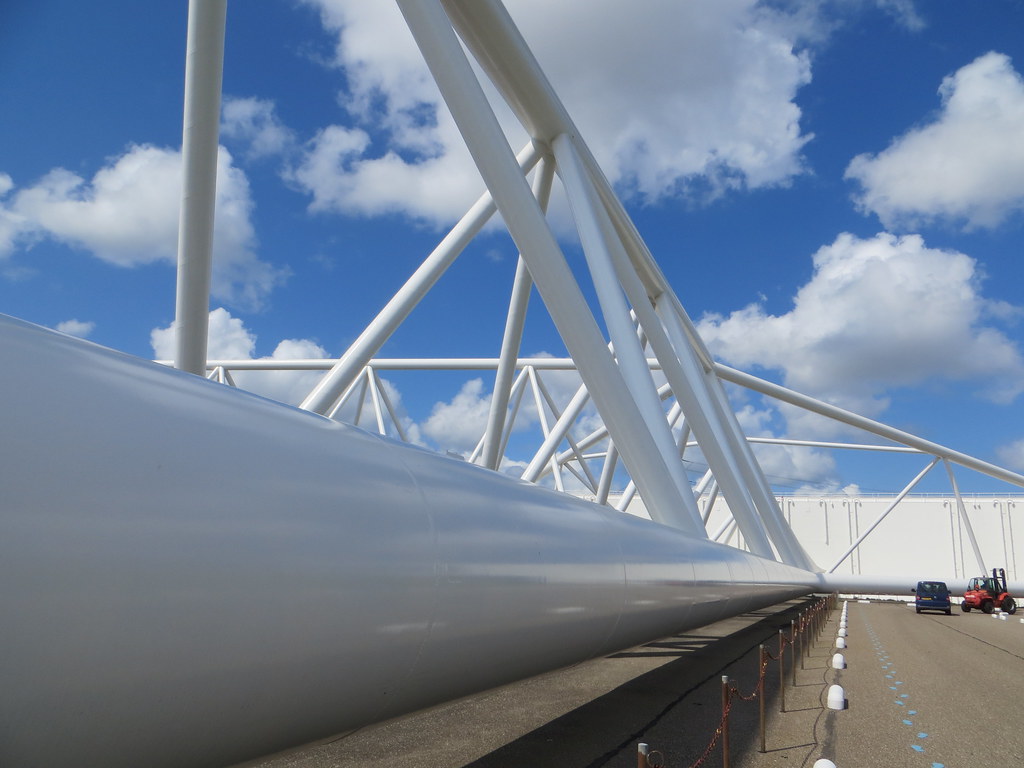 |
 |
 |
| Those lower struts have to be regularly repainted on the inside as well as out - and the steel is apparently 7cm thick. |
Sunday 1 September 2019
What I did on my holidays (III) Outside Amsterdam - Enkhuizen
Having some time to explore more widely than the usual round of things to do and see in Amsterdam, this trip took on something of a watery theme.
An hour or so north is the pretty town of Enkhuizen, on the edge of what was once the Zuiderzee, till they closed it off in 1932 to reduce the dangers of flooding from the North Sea, and forming the IJsselmeer and some substantial areas of poldered land.
Nowadays it is a magnet for plenty of leisure sailors.
One can only guess at the combined value of all those boats. Once, the town's inhabitants liked to leave the marks of their modesty as well as the source of their prosperity:
Of course, safety came at a price: major changes to the way of life in the villages around the affected coast as fishing declined, the war and occupation came, and small market gardening faced increased competition from larger operations.
Hence the Zuiderzee Museum, a collection of reconstructed village houses and other buildings (church, school, pharmacy, post office, smithy, laundry and so on) arranged on the same sort of plan as a typical village, on the edge of the still seemingly vast expanse of water, with plenty of craft sailing by as they did years ago. The interiors are smaller and darker than the photos suggest, to the point that my entering an open front door gave another visitor quite a fright as, at just that moment, she came out into the hallway.
There's an indoor museum displaying all sorts of objects and artefacts demonstrating the different trades, pastimes and costumes of the different villages. Just as the old, relatively isolated ways of life were starting to dissolve into standard modernity, the tourism promotion authorities chose just those costumes as a symbol for all that is Dutch, so these will not be entirely unfamiliar:
An hour or so north is the pretty town of Enkhuizen, on the edge of what was once the Zuiderzee, till they closed it off in 1932 to reduce the dangers of flooding from the North Sea, and forming the IJsselmeer and some substantial areas of poldered land.
Nowadays it is a magnet for plenty of leisure sailors.
 |  |
One can only guess at the combined value of all those boats. Once, the town's inhabitants liked to leave the marks of their modesty as well as the source of their prosperity:
 |  |
Of course, safety came at a price: major changes to the way of life in the villages around the affected coast as fishing declined, the war and occupation came, and small market gardening faced increased competition from larger operations.
Hence the Zuiderzee Museum, a collection of reconstructed village houses and other buildings (church, school, pharmacy, post office, smithy, laundry and so on) arranged on the same sort of plan as a typical village, on the edge of the still seemingly vast expanse of water, with plenty of craft sailing by as they did years ago. The interiors are smaller and darker than the photos suggest, to the point that my entering an open front door gave another visitor quite a fright as, at just that moment, she came out into the hallway.
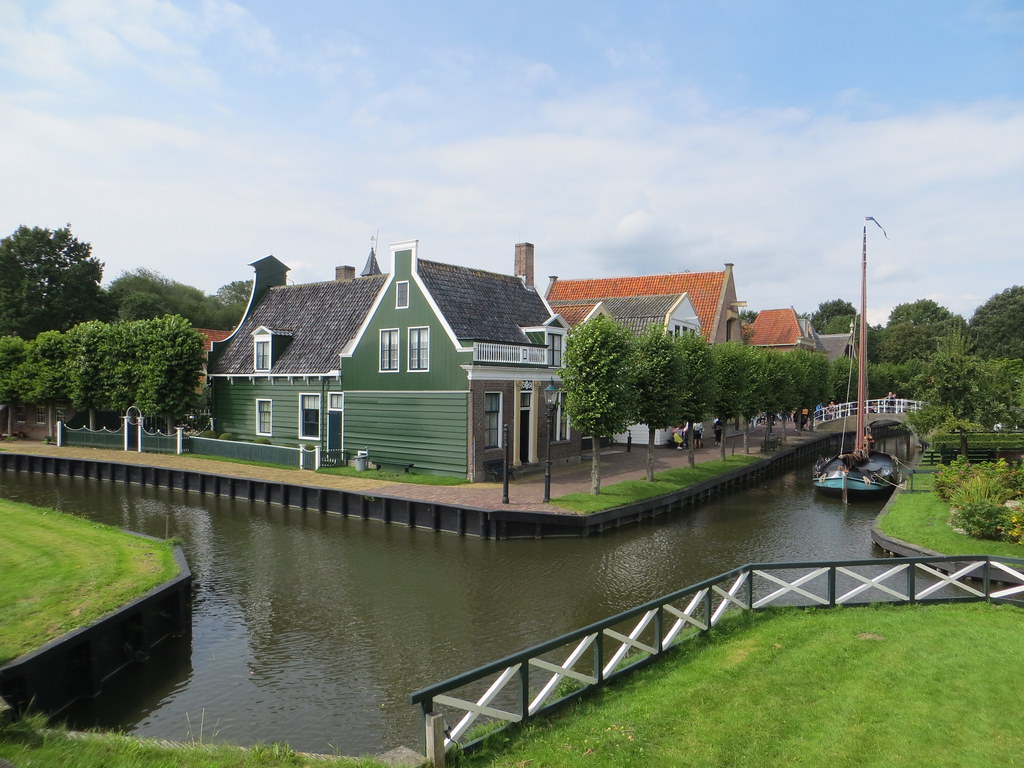 |  |
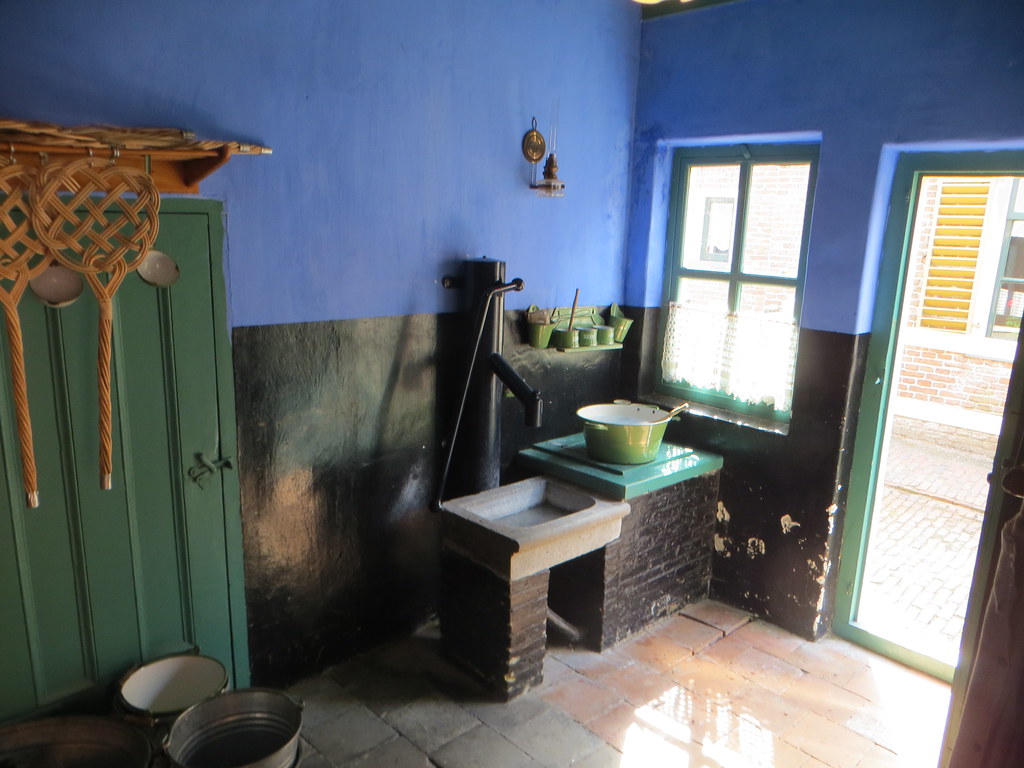 |  |
Subscribe to:
Posts (Atom)




